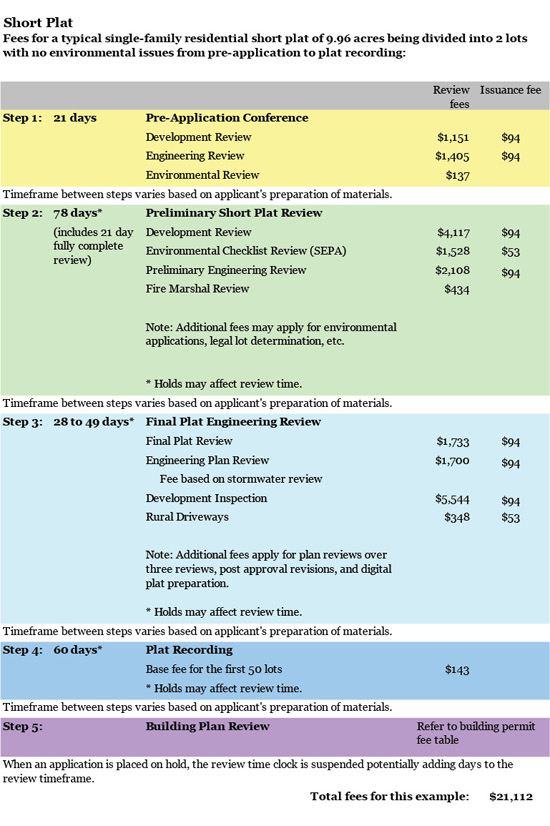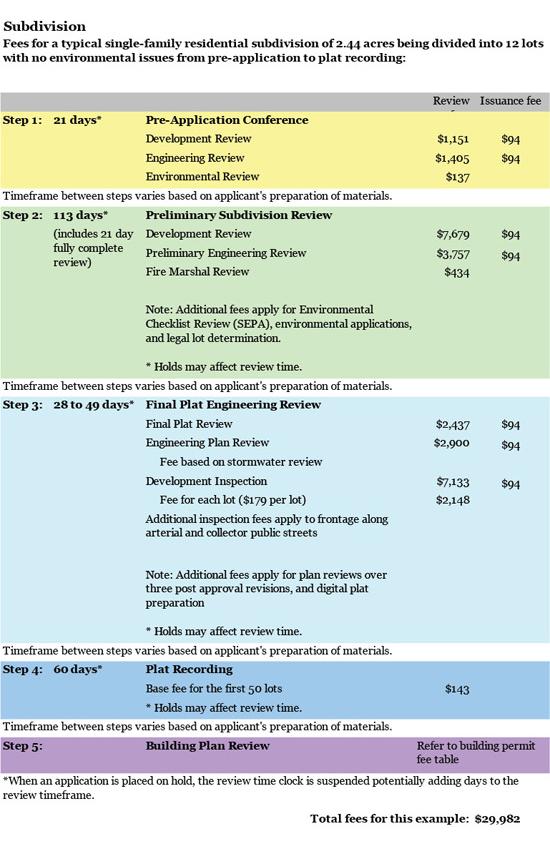In order to create legal lots for future use, it is important to divide parcels using a short plat or subdivision process.
Criteria
A lot must be a Legal Lot of Record in order to be divided. Legal lots must meet the zoning requirements at the time the lot was created or current zoning requirements and the platting laws in place at the time it was created.
Zoning determines the minimum area and dimensions.
Platting (or land division) standards indicate the type of review process required to legally create new lots. If a lot met the requirements in place when it was originally created, and has not changed, it will remain a legal lot.
If there is no record that a lot is a Legal Lot of Record then you should consult with a Permit Technician and/or apply for a Legal Lot Determination.
Types of land divisions
In a rural area, creating four lots or less is called a Short Plat. Five or more lots are a Subdivision.
In an Urban Growth Area, a Short Plat is nine lots or less. Ten or more urban lots are a Subdivision.
Short Plats are administrative decisions reached by staff. Subdivisions require a public hearing before a Land Use Hearing Examiner.
Property information
Each piece of property has unique qualities that must be identified and may have an influence during the review process.
Use Maps Online to find out information about your property, including zoning, environmental factors, tax information, and more. Follow these instructions.
Zoning
Once you know your zoning, you can decide on the type of land division you would like to do.
Development codes
The Clark County Code is a set of regulations that govern the use and development of property. The Unified Development Code, Title 40 is a valuable resource for codes specifically for development. Other codes that may have requirements for your project:
Application
Application submittal
Our handouts provide information about all land use and development requirements, permit applications, and fees. Please read the handouts carefully because it will explain the process, list the submittal requirements and let you know the fees. Handouts can be found on our Forms and fees page.
A Developer’s Packet is required for short plat and subdivision applications. Visit the GIS website for more information.
Visit this page for application submittal guidance.
Fees
Preliminary development review fees are determined on many different factors. Refer to the adopted fees in CCC Title 6. Permit Technicians will be able to tell you your exact fees when you apply.
Review
Reviewing land divisions is a multi-step process. Short plats are a Type II review and subdivisions are a Type III review. Find out more about the review process.
Use permit status to stay updated on your project as it flows through the review process. You must have your case/permit number.
For more information, visit our Permit Center, contact us by email at landuse@clark.wa.gov or call us at 564.397.4489.
Fees
The fee illustration shown below is an example. Fees for your project will differ depending on your specific project requirements. See CCC Title 6 for development fees.
For more information, visit our Permit Center, contact us by email at landuse@clark.wa.gov or call us at 564.397.4489.

